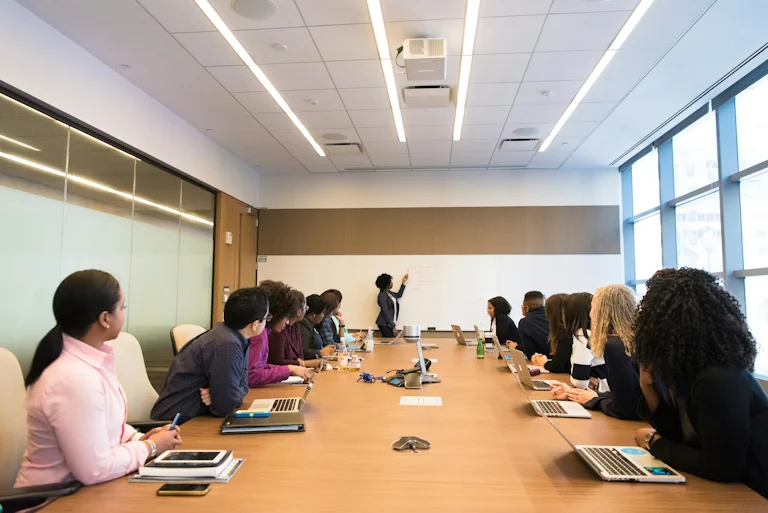This new revelation is sure to disrupt office snack budgets nationwide – a groundbreaking new study has confirmed what we all suspected: 90% of workplace meetings could have easily been replaced by a simple email while 6 of the remaining 10% could have not happened altogether. The research, conducted by the International Labour Organization, finally sheds light on the ongoing mystery of why so many professionals spend their days trapped in soul-crushing rooms, nodding blankly while someone reads off bullet points that were already attached to the calendar invite.
Dr. Helen Hemsworth, the lead researcher on the study, described the findings as “both astonishing and depressingly predictable.” She explained, “We analyzed thousands of meetings, from corporate boardrooms to your boss’s impromptu ‘team syncs,’ and the results were unanimous. The vast majority were either 30-minute sessions that could have been summarized in a three-sentence email, or worse, completely unnecessary gatherings where people discussed setting up more meetings.”
The report notes that only 4% of meetings had any legitimate value, primarily in cases where someone needed to physically show you how to turn it on and off again, how the office printer works or to debate what kind of coffee beans the break room should stock. As it turns out, office coffee, especially when free, is somehow never good.
“I honestly had no idea what we were doing in there most of the time,” said Mark, an employee at a mid-sized company who asked not to be fully named due to fear of being invited to another “Quick Sync” after this article publishes. “Last week, we had a two-hour meeting to discuss the ‘Meeting Efficiency Initiative.’ The irony was so thick, you could slice it”
The study also revealed a disturbing trend: employees pretending to be engaged while secretly planning their grocery lists, reading the news or staring at their Microsoft Teams chat in the desperate hope someone will say, “I think we can wrap this up early.” Most reported they rarely made it through the first 10 minutes before zoning out completely. “I sat through a 45-minute presentation about synergy and I still don’t know what synergy means,” admitted Sarah, a marketing manager with three kids and absolutely zero patience left. “Honestly, I only show up to meetings to get away from my desk. It’s not about learning or contributing, it’s about survival.”
In response to the study, corporations around the globe have pledged to “rethink” their meeting culture, which is corporate-speak for sending out more surveys about how they can improve productivity while continuing to waste everyone’s time and then setting up more meetings; however, some companies have taken more drastic action. Tech startup SynergoTech has introduced a bold new policy where all meetings are conducted via emoji in a Slack channel. “We’ve replaced hour-long discussions with a string of thumbs-ups, rocket ship emojis and dancing monkeys,” explained CEO Blake Jetson. “It’s all about streamlining communication.”
Still, not everyone is on board. Linda, a senior manager at her company who spends most of her workday setting up meetings, expressed concern: “How else will people know I’m doing something? I can’t just email everyone. I don’t get any sense of power from that!”
The study’s findings have left millions of employees hopeful for change, yet cautiously skeptical that anything will actually happen. As one anonymous source put it: “I’ll believe it when my Outlook calendar is no longer booked solid with back-to-back nonsense.” In the meantime, Dr. Hemsworth and her team are preparing for their next major study: “Zoom Fatigue”


